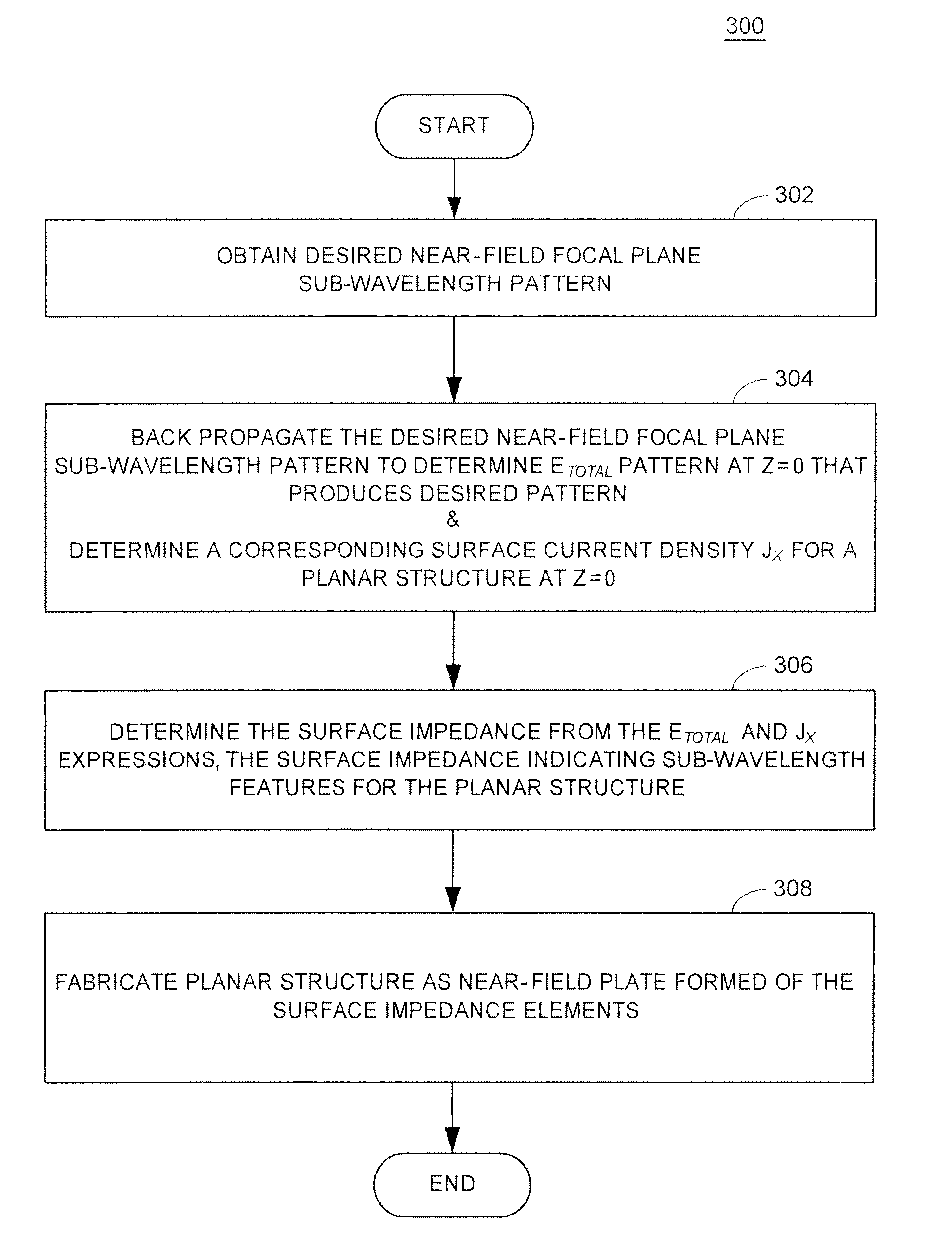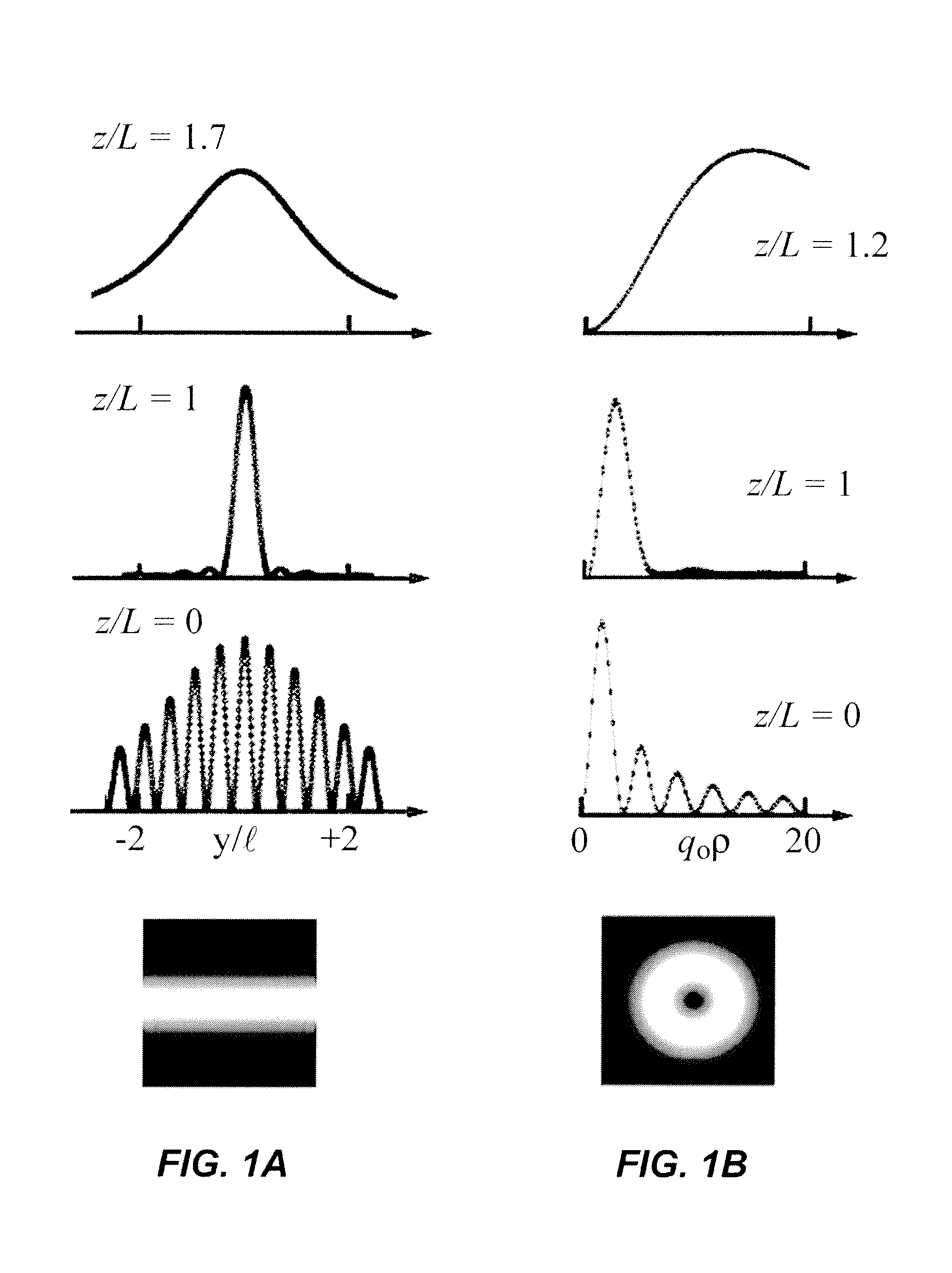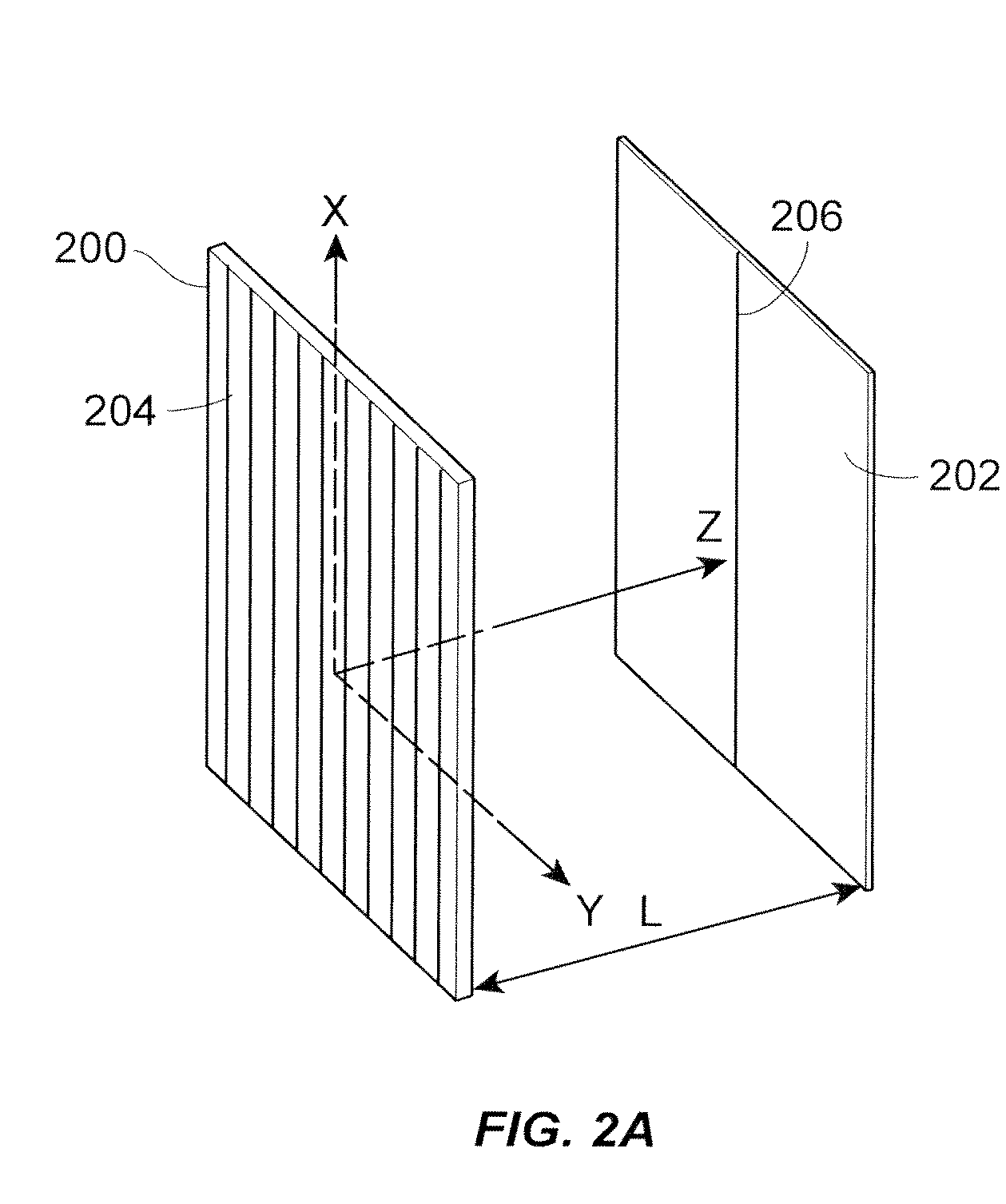Apparatus for sub-wavelength near-field focusing of electromagnetic waves
a near-field focusing and electromagnetic wave technology, applied in the field of sub-wavelength near-field focusing techniques, can solve the problems of standard interference techniques and geometrical optics methods not applying
- Summary
- Abstract
- Description
- Claims
- Application Information
AI Technical Summary
Benefits of technology
Problems solved by technology
Method used
Image
Examples
Embodiment Construction
[0028]To provide background on the techniques herein, take F as one of the Cartesian components of the electric (E) or the magnetic field (H) of an electromagnetic wave. Assume that all field sources are monochromatic, with time-dependence given by e−iωt (where ω is the angular frequency). Further assume that each field is orientated to originate from one side of a particular plane, defined as z=0. Then, for z≧0, F satisfies the Helmholtz wave equation ∇2F+k2F=0 and can thus be expressed in the form:
[0029]F(x,y,zα)=14π2∫∫∫∫-∞+∞F(x′,y′,zβ)ⅇⅈ[qx(x-x′)+qy(y-y′)+κ(zα-zβ)]ⅆx′ⅆy′ⅆqxⅆqy(1)
which provides an exact relationship between the solution to the wave equation in two arbitrary planes parallel to each other and above z=0, i.e., z=zα>0 and z=zβ>0. With k=2π / λ, κ in the F field expression Eq. (1) will have one of the following two values depending on the relative values shown:
[0030]κ={ⅈ(qx2+qy2-k2)1 / 2qx2+qy2≥k2(k2-qx2-qy2)1 / 2qx2+qy2<k2(2)
With the F field source origina...
PUM
 Login to View More
Login to View More Abstract
Description
Claims
Application Information
 Login to View More
Login to View More - R&D
- Intellectual Property
- Life Sciences
- Materials
- Tech Scout
- Unparalleled Data Quality
- Higher Quality Content
- 60% Fewer Hallucinations
Browse by: Latest US Patents, China's latest patents, Technical Efficacy Thesaurus, Application Domain, Technology Topic, Popular Technical Reports.
© 2025 PatSnap. All rights reserved.Legal|Privacy policy|Modern Slavery Act Transparency Statement|Sitemap|About US| Contact US: help@patsnap.com



